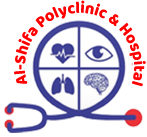Renal calculi, or kidney stones, are solid masses composed of crystals that come from the kidneys. They can range in size from a grain of sand to that of a golf ball. Usually, kidney stones form when urine gets concentrated, causing minerals and other substances to crystallize and stick together.
Types of Kidney Stones
- Calcium Stones: Composed of calcium oxalate, these are the most common type.
- Struvite Stones: Linked to urinary tract infections.
- Uric Acid Stones: Form when urine is too acidic.
- Cystine Stones: Uncommon and caused by a genetic disorder.
Symptoms
Depending on the size and position of the stone in the urinary canal, kidney stones can cause a variety of symptoms:
- Pain: Severe pain, usually in the back, side, abdomen, or groin. The severity of the pain can fluctuate and come in waves.
- Urinary Changes: Urine may turn pink, red, or brown (indicating blood), become cloudy or foul-smelling, and there may be an ongoing urge to urinate frequently.
- Nausea and Vomiting: Some kidney stone sufferers experience these symptoms.
- Fever and Chills: If kidney stones are accompanied by an infection.
- Urinary Tract Infections (UTIs): Kidney stones may cause recurring UTIs.
Causes
The exact cause of kidney stones can vary, but they often arise when the amount of crystal-forming chemicals in the urine (such as calcium, oxalate, and uric acid) exceeds what the urine can dilute. Factors include:
- Dehydration: Inadequate water intake can lead to concentrated urine, increasing the risk of kidney stones.
- Certain Diets: High in sugar, sodium (salt), and protein can raise the risk.
- Personal or Family History: Higher risk if a family member has had kidney stones or if you have had them before.
- Medical Conditions: Such as renal tubular acidosis, cystinuria, hyperparathyroidism, and specific UTIs.
- Obesity: High body mass index (BMI), large waist circumference, and weight gain are associated with a higher incidence of kidney stones.
- Digestive Disorders and Surgery: Conditions like gastric bypass surgery, inflammatory bowel disease, or chronic diarrhea can affect calcium and water absorption, raising the levels of stone-forming substances in the urine.
Treatment
The treatment for kidney stones depends on various factors, including the size and position of the stone, the severity of symptoms, and the patient’s overall health.
Common Treatment Options
- Watch and See: Small kidney stones may pass naturally without medical intervention, aided by pain medication and plenty of fluids.
- Medication: Pain relief and medications like alpha blockers to relax the ureter muscles, facilitating stone passage.
- Extracorporeal Shock Wave Lithotripsy (ESWL): Non-invasive procedure using shock waves to break stones into smaller pieces for easier passage.
- Ureteroscopy: A tiny tube with a camera is passed into the bladder and urethra to locate and break up or remove the stone with laser energy.
- Percutaneous Nephrolithotomy (PCNL): For larger stones, a small incision is made in the back, and a nephroscope is inserted to remove the stone.
- Surgery: Sometimes required for large stones or stones that cannot be removed by other methods.
Conclusion
Renal calculi, or kidney stones, are hard lumps that develop in the kidneys from crystals. They can cause severe discomfort and other symptoms. Treatment varies based on factors such as the stone’s composition, size, and location, ranging from watch-and-see approaches for smaller stones to surgical procedures or shock wave lithotripsy for larger stones. Preventative measures include adequate hydration and dietary adjustments. Consult a physician for proper diagnosis and treatment if you suspect you have a kidney stone.
